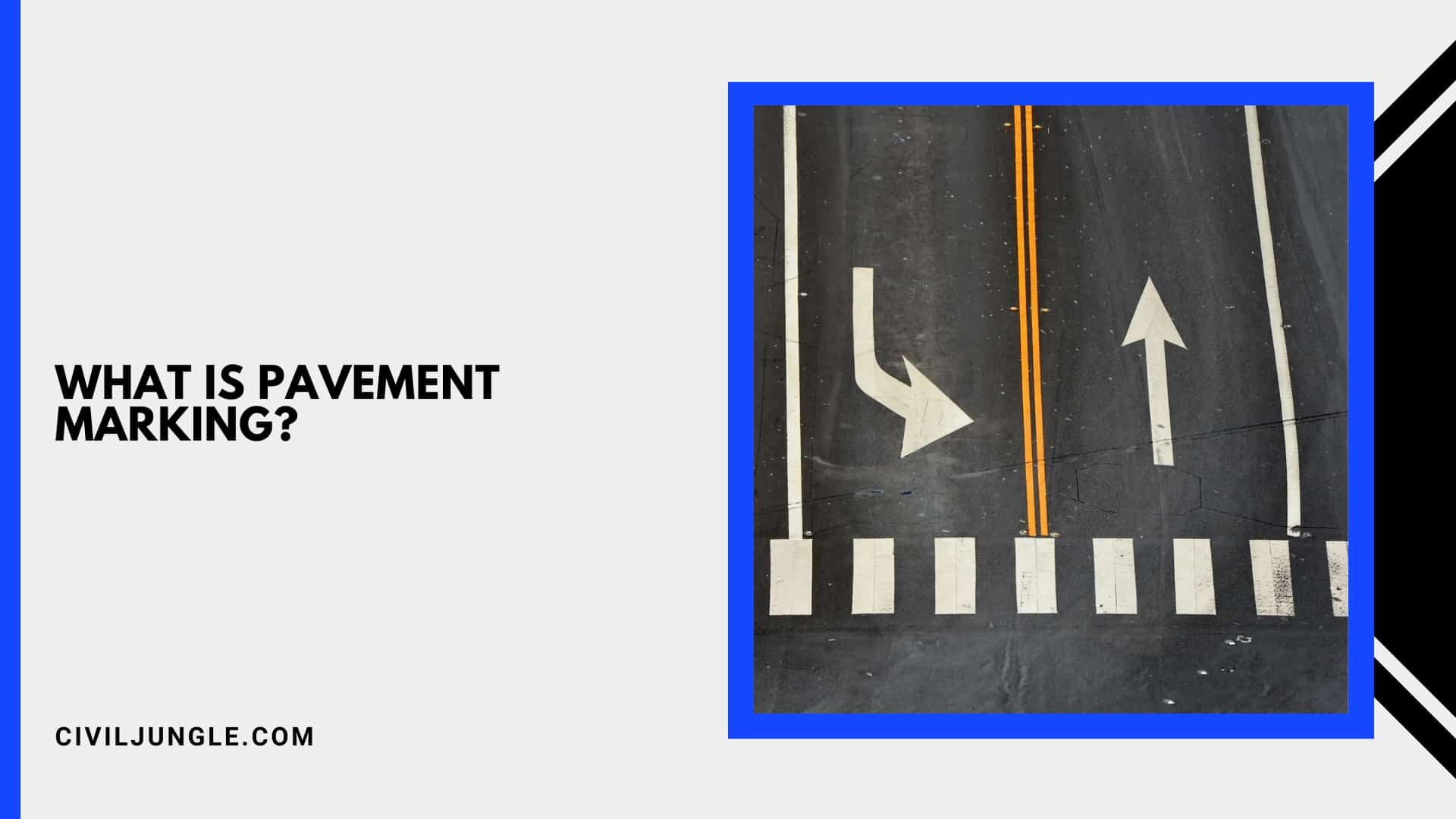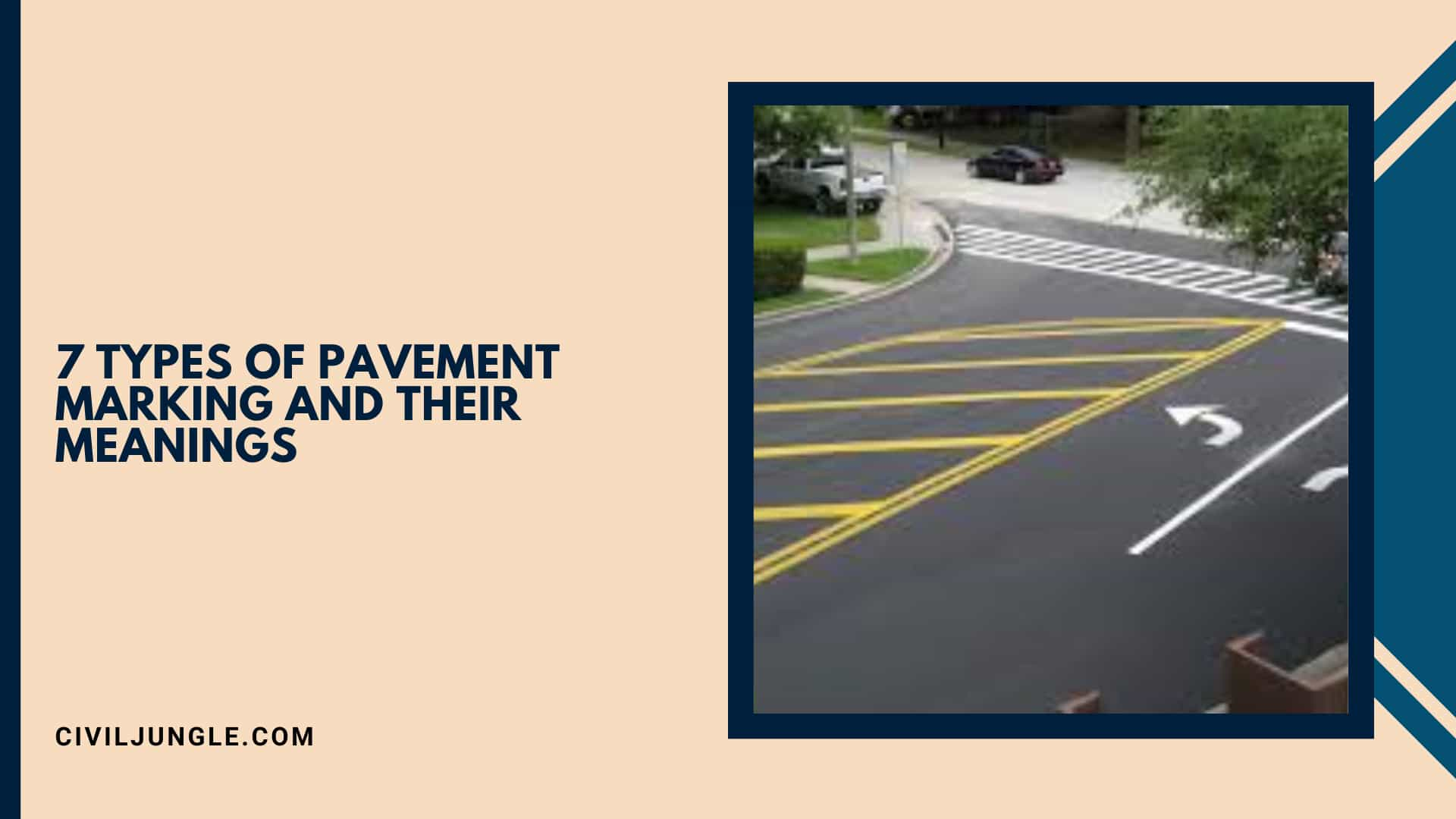What Is Pavement Marking?
Important Point
Pavement markings are defined as different types of markings used on paved roads for guidance and information directly to pedestrians and drivers on the road. Pavement marking is done for vehicle parking spaces or other uses.
Sometimes the marking on the surface of all pavement markings directions for parking and stopping.
Continuous efforts are being made for a new system to enhance the facilities for pavement marking. This new technology focuses on things like generating retro-reflectivity for road marking, increasing longevity, and reducing installation costs.
In today’s modern times, all pavement markings are used to convey issues like extended navigational, safety, and enforcement to the driver.
So that the use of advanced driver-assistance systems leads to a matter of road environment, all pavement markings on the autonomous road are considered for future use in vehicles.
Marking on the pavement’s surface is used to guide and inform drivers and pedestrians on the pavement easily. There is an important factor in reducing confusion and uncertainty by interpreting signs.
Efforts are underway to make such markings on the surface of the border pavement. Different countries and regions mark the marks on the surface of the pavement differently.
The marking color indicates this – white marking lines are called mechanical, non-mechanical, or temporary markings.
Pavement marking is usually found in excessive white or yellow. White and yellow are the most popular colors for pavement marking.
Also Read: All You Need to Know About Sliding Windows: Types, Installation, Replacement, and Pros & Cons
Importance of Pavement Marking
The white marking line and yellow marking lines on the pavement surface divide the traffic into two lines. Pavement Marking in yellow color the center of the road while road traffic is traveling in two directions. The white marking line indicates that the traffic lane is in the same direction.
Yellow marking lines mark the center of a two-way road used for two-way traffic. If the yellow center line pavement marking is broken in the middle, you can cross the two-way road.
All pavement markings are commonly used to induce safe, orderly, smooth traffic flow. In addition, due to the pavement marking, excellent use of the road is possible.
Effective pavement marking requires understanding the traffic on the road on an hourly basis. A reliable system for pavement marking has been developed based on color, shape, and use.
When pavement marking is done according to this system, the determined message is passed. All Pavement markings are maintained periodically to provide proper visibility for day and night.
Functions of Road Markings
The main function of road marking is to continuously guide the safe and smooth flow of traffic: which includes various functions as follows,
- Overtaking the vehicle or not
- Segregation of traffic
- Direction
- Stop and go
- Pedestrian crossing
- Parking zone or no parking
- Speed indication
Also, Read: Understanding Lantern Windows: Types, Benefits, and Installation Considerations
7 Types of Pavement Marking And Their Meanings
- Longitudinal Makings
- Transverse Markings
- Hazard Marking
- Arrow Marking
- Raised Pavement Markings (Rpm)
- Edge Line Pavement Markings
- Crosswalk Markings
1. Longitudinal Pavement Markings
Longitudinal making is placed along the direction and edge of the traffic on the road surface. This marking is done for the purpose of indicating the right direction to the driver and maintaining his proper position on the road.
This type of pavement marking includes lane lines, centerlines, edge lines, channelizing lines, etc.
This type of marking is done to guide the traffic on the road by giving the driver a visual solution in the travel lane. This type of pavement marking is a very important marking.
Longitudinal Line marking Functions
Double Line:
This type of line marking indicates maximum or major restrictions.
Solid Line:
This type of line marking suggests preventing crossing or restricted areas.
Broken Line:
This type of line marking indicates a permissible condition.
Centre Line Markings:
This type of pavement marking divides the road into two equal parts. This pavement marking indicates that traffic on one side should not go to the other side.
Edge Lines:
This type of pavement marking is usually a white or yellow line drawn on the roadside. This marking indicates the carriageway edge line of the road.
Bus Lane Markings:
This type of marking indicates the right side of the carriageway for heavy vehicles like buses, trucks, etc.
2. Transverse Pavement Markings
This type of pavement marking includes stopping line marking and give-way marking. Marking is done on the carriageway for the purpose of traffic control. These transverse markings are usually made with their corresponding marks.
Stop Line Markings
Stop line marking is used to stop vehicles in the direction of traffic police and traffic signals. Vehicles should not proceed beyond this marking. Stop line marking is done parallel to the road at the intersection.
Give Way Line Markings
This type of marking is done at the intersection of small roads. This type of marking is done where it is free from stop signs, traffic signals or police, etc.
3. Hazard Pavement Marking
This type of hazardous marking is done to divert traffic, ban crossovers, and guide traffic against hazardous conditions.
Such markings include instructions such as diagonal marking, hatch marking, and restricted marking. Hazard marking is always done with the right indication.
4. Arrow Pavement Marking
This type of pavement marking is done to instruct the driver to take a mandatory turn. There must be warning lines and directional arrows above the intersection road.
Arrow pavement marking is used to guide drivers in advance on a very busy road. Usually, four arrows marking is used in pavement marking.
The distance of arrow marking in each lane should be 15 meters from each other.
5. Raised Pavement Markings (Rpm)
Raised pavement marking is used on roads as a safety device. Devices for this type of marking are made from different materials.
These types of marking devices can be made from materials like plastic, ceramic, thermoplastic paints, and glass. This type of marking device can be made in different shapes and different colors.
These types of raised pavement markers can be fixed directly on the road surface. The retro-reflective surface of the device makes it clearly visible at night and in rainy weather.
6. Edge Line Pavement Markings
Edge line pavement marking defines the edge of the road. This is useful as a reference to the edge of the road in adverse weather conditions.
White lines are usually used for pavement marking on the right side of the road.
7. Crosswalk Pavement Markings
This type of crosswalk marking suggests a path for pedestrians during road crossings.
Crosswalk marking facilitates road users. This type of marking is unsuitable for those who are free by traffic signals or STOP signs.
8. Yellow Pavement Markings
Yellow pavement markings on the road indicate that the traffic is divided into going in different directions. This type of pavement marking is done especially for curves, hills, grade crossings, bridges, etc.
Also, Read: What Is Sash Window | Types of Sash Windows | Benefits of Sash Window | Historic Window Sash Replacement
Different Colors Used in Pavement Marking
1. White
The use of this color separates the traffic traveling in the same direction on the road.
2. Blue
The blue color is used for marking handicapped parking.
3. Yellow
The use of this color separates the traffic flow in the opposite direction on a one-way road.
4. Purple
This color is used to provide a controlled edge line to vehicles entering the toll plaza.
5. Black
This type of color is used for light-colored pavements with other pavement marking colors (yellow, white, red, blue, and purple).
Advantages & Disadvantages of Pavement Marking
Advantages of Pavement Marking
- All Pavement marking provides safe guidance to traffic.
- All Pavement marking works more durably and safely. Pavement marking can work for about 5 to 8 years, depending on the traffic.
- Pavement marking does not require special equipment. So it can be easily installed.
- Pavement marking has high visibility.
- Pavement marking is the act of controlling traffic.
- Pavement marking does not require much-skilled labor.
- Less skilled labor is required for pavement marking.
- Parking lot pavement marking standards is a great job.
Disadvantages of Pavement Marking
- Pavement marking is not suitable for poor-condition roads.
- The initial cost of the material for pavement marking is high.
Like this post? Share it with your friends!
Suggested Read –
- 8 Types of Pointing in Construction
- What Is Theodolite And Their Types
- Credenza Vs Sideboard & Complete Guide
- What Is Shuttering And Their Different Types
- What Is Hollow Brick Masonry And Their Uses
What Is Pavement Marking?
Pavement marking refers to the various types of markings applied to paved roads to provide guidance and information to pedestrians and drivers. These markings are crucial for delineating traffic lanes, parking spaces, and conveying important information to road users.
What Are the Functions of Road Markings?
Road markings serve multiple functions, including indicating overtaking zones, segregating traffic, providing directional guidance, signaling stop and go areas, marking pedestrian crossings, indicating parking zones, and displaying speed limits.
What Are the Different Types of Pavement Marking?
There are several types of pavement markings, including longitudinal markings (lane lines, centerlines, edge lines), transverse markings (stop lines, give-way lines), hazard markings, arrow markings, raised pavement markings (RPMs), edge line markings, and crosswalk markings.
What Do Different Pavement Marking Colors Signify?
Different colors in pavement marking have specific meanings. For example, white lines separate traffic traveling in the same direction, yellow lines separate traffic flow in opposite directions, blue markings are used for handicapped parking, and purple markings indicate controlled edge lines at toll plazas.
What Are the Advantages of Pavement Marking?
Pavement marking provides safe guidance to traffic, enhances durability and visibility, helps control traffic flow, requires minimal skilled labor, and contributes to organized and safe parking lot standards.




Leave a Reply